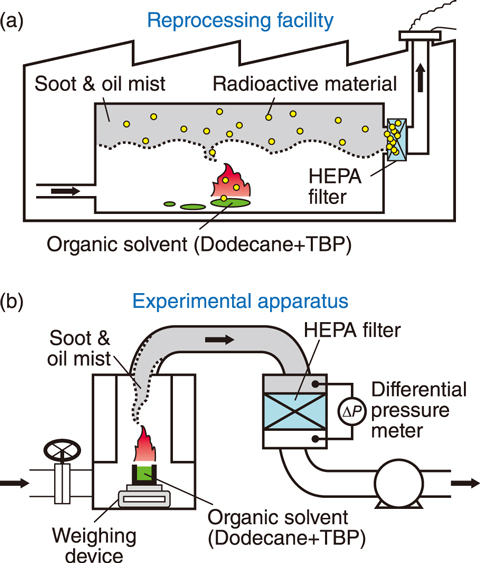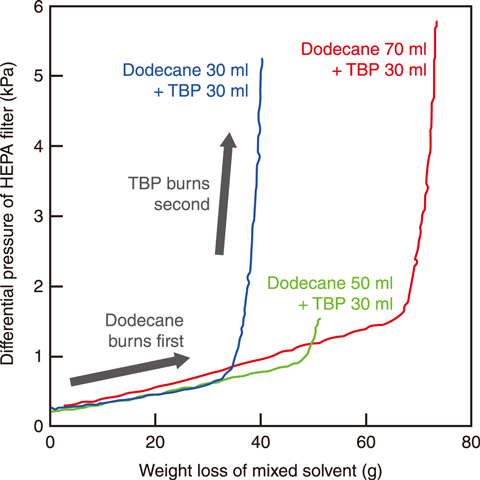
Fig.2-14 Schematics of an organic solvent fire (a) and the designed experimental apparatus (b)

Fig.2-15 Change in differential pressure (ΔP) of HEPA filter
Reprocessing facilities are equipped with high-efficiency particulate air (HEPA) filters that trap particulate radioactive material within the facility. A lot of organic solvent consisting of tributyl phosphate (TBP) and dodecane are used to recover useful elements from spent nuclear fuel. As the solvent mixture is combustible, the fire risk in the facility must be considered. Furthermore, severe accidents must be considered when assessing the safety of the facility.
This study therefore aimed to estimate how long a HEPA filter can remain intact under an organic solvent fire, as a damaged filter can increase the leakage of radioactive material from the reprocessing facility, as shown in Fig.2-14(a).
In a fire, the HEPA filter can become clogged with soot and oil mist from burning combustible substances. If the differential pressure (ΔP) of the filter exceeds its limit, the filter may be damaged. We have used a small experimental apparatus (Fig.2-14(b)) to burn various combustible substances and measure the change of ΔP of the filter. As a result, we found that the ΔP rises sharply at the late stage of combustion of the mixed solvent. This finding is important because it suggests that the filter can become damaged more quickly than expected in conventional evaluations.
To clarify the mechanism behind the sharp increase in the ΔP, the relationship between the increase in the ΔP and the change of solvent composition during combustion. We prepared three types of mixed solvents using 30 ml of TBP and either 30, 50, or 70 ml of dodecane. These mixed solvents were then burned while the resulting change in the ΔP of the HEPA filter was measured. The amount of soot and oil mist released, the weight loss of the mixed solvent, and changes in the solvent composition with combustion were also measured and analyzed.
As a result, the ΔP of the HEPA filter gradually increased in the early stages of combustion before sharply increasing in the late stage, as shown in Fig.2-15. During combustion, dodecane, which is relatively combustible, burns first; TBP then burns second. Solvents containing less dodecane saw a sharp increase in the ΔP earlier during combustion; further, the increase consistently occurred near the point at which dodecane was expected to burn out. Additionally, the amount of oil mist released increased at this point. Since TBP is relatively inflammable, an unburned oil mist containing TBP was likely released at this later stage of combustion, thus clogging the filter and causing the sharp rise in the ΔP.
This study was performed under the research entrusted in FY2016, sponsored by the Nuclear Regulation Authority (NRA), Japan.
(Takuya Ono)